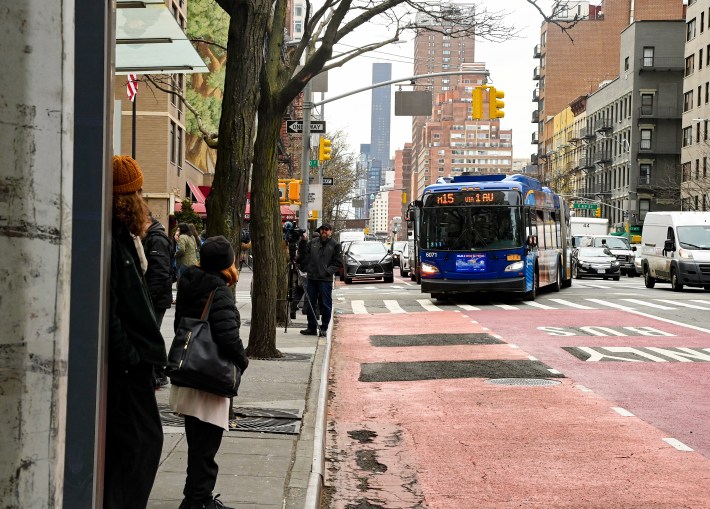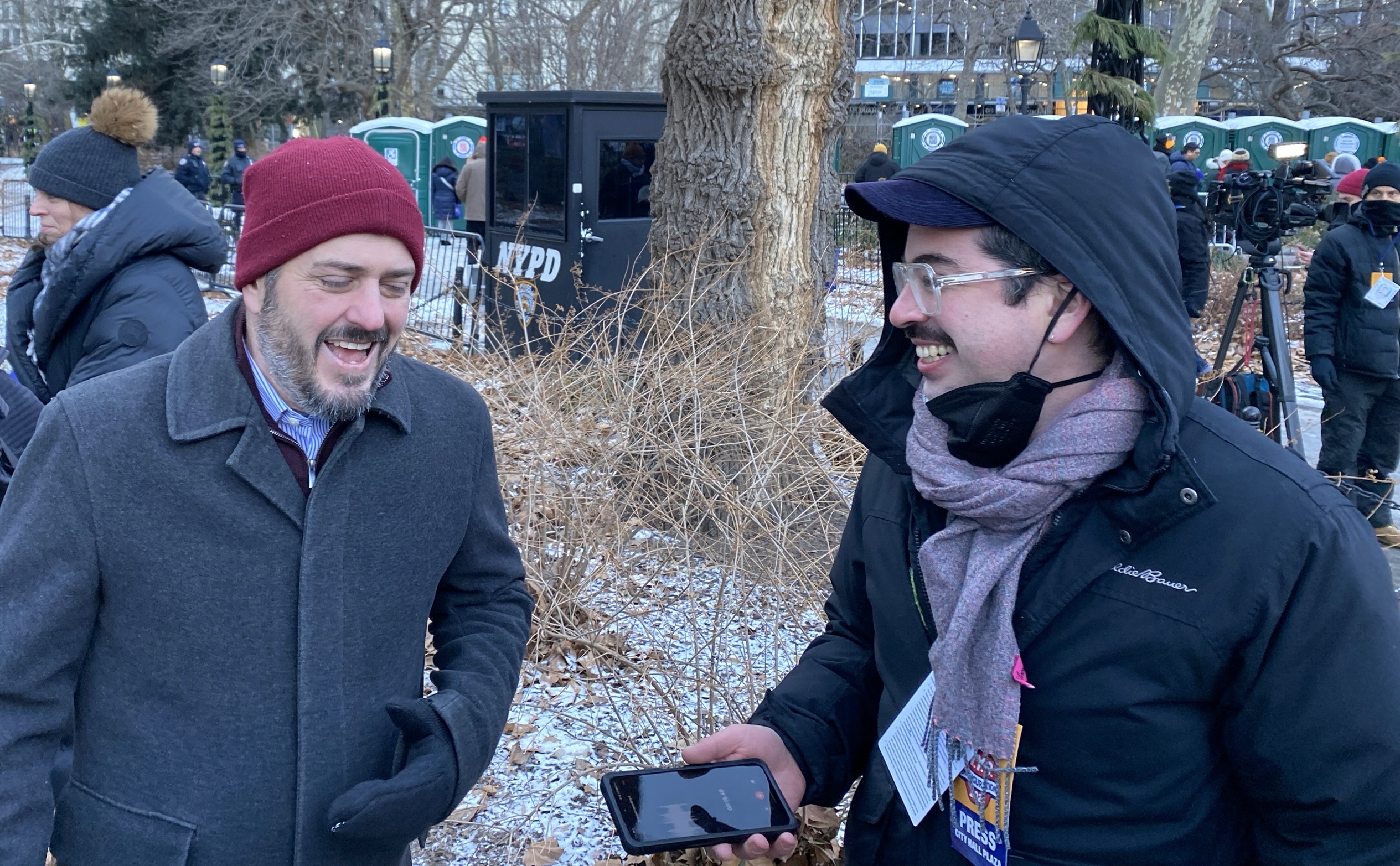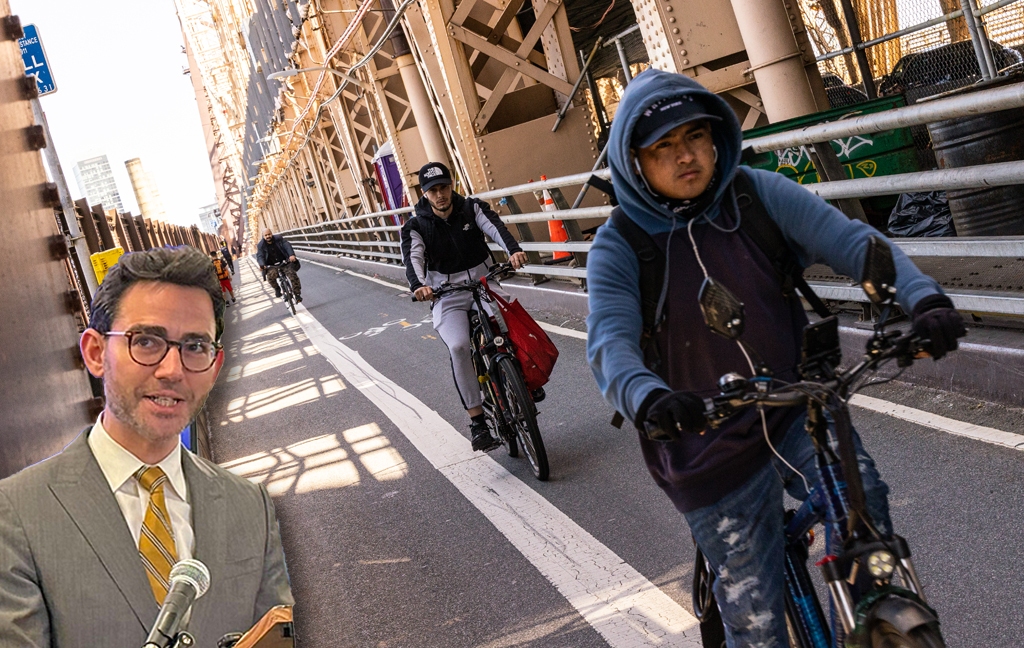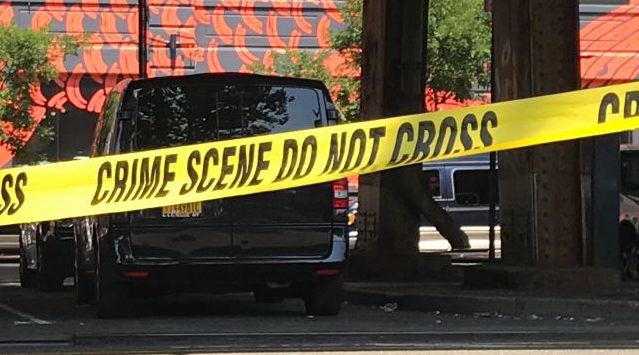Buses are moving faster in and around New York City ever since congestion pricing kicked in, according to transit officials — who have started tweaking MTA schedules to reflect the Big Apple's lower traffic.
The drop in traffic thanks to the toll to drive into Manhattan below 60th Street has sent ripple effects to suburban commuter counties upstate and in New Jersey, MTA New York City Transit President Demetrius Crichlow told City Council members on Wednesday.
The speed boosts are particularly evident on the bridges and tunnels entering Manhattan, Crichlow said.
"Every single crossing that gets into Manhattan has seen an improvement, some lines as much as seven to 10 minutes improved speeds," he said.
Bus speeds across the MTA system are up 4 percent over last month, while crossing times are up at the Holland Tunnel (48 percent), the Williamsburg Bridge (30 percent) and the Queensboro Bridge (30 percent), Crichlow said.
The QM8 express bus, which runs from the Queens-Nassau County border in Glen Oaks to Lower Manhattan via the Queens-Midtown Tunnel, shaved 10 minutes off its usual run time since congestion pricing launched.
The SIM8X, which goes from Staten Island to Midtown via New Jersey and the Lincoln Tunnel, has also sped up by seven minutes. Even in Rockland County and Orange County, coach companies are reporting benefits, said an MTA rep.
"They’re saying, ‘Yeah, buses are moving quickly.’ They’re actually getting more customers and people are happy," said MTA Chief of Policy and External Relations John McCarthy. "They’re picking up a lot in the tunnels, there’s just lower numbers there."

Within the city, buses now operate faster than their posted schedules due to lower car traffic in the congestion relief zone — forcing operators to wait around at stops to stick to their posted schedules. As such, the MTA is testing out allowing the drivers to keep moving on a handful of lines.
"They had so much time built into their schedules and now there’s no traffic, so the buses themselves would come, stop at a station and have to wait for their timing point and then move," Crichlow explained. "We’re removing those timing points on seven ... bus lines right now to pilot it out."
Those lines include the M11, M31, M42, M50, M66, M101 and the Q32, as Crain's previously reported.
Manhattan buses have for decades been among the slowest in the nation. Buses in the borough routinely won spoof awards from advocates for the slowest lines in the city. Congestion pricing has made riding on those routes desirable again.
Politicians and advocates hope the MTA can capitalize on the increased speeds with increased service.
"It sounds like there may be opportunities for us to increase service as the result of more efficient travel times around the city for buses so that there’s even more frequent, reliable and efficient service for riders," said Council Member Lincoln Restler (D-Brooklyn) at the Council meeting.
As the MTA has said before, express bus ridership has increased along with speeds — on weekends in particular.
"New York City has the slowest bus service in America and nowhere has it been worse than in Manhattan which has struggled with traffic gridlock for decades," said Danny Pearlstein Policy and Communications Director of Riders Alliance. "This is improving conditions for longstanding bus riders as well as bringing more people on board, it’s doing exactly what it was supposed to do."
It's not just buses: foot traffic is up in the congestion relief zone too — despite cooler temperatures this winter — and Manhattan's economy has reaped an almost billion-dollar boost during the charge's first month alone.
Meanwhile, the traffic hasn't relocated to other boroughs — as car trips on four outerborough bridges actually dropped in February, according to MTA data.
The benefits fly in the face of criticisms from President Trump and federal Secretary of Transportation Sean Duffy, who have demanded New York kill congestion pricing by March 21.
Gov. Hochul and her appointed MTA leadership have vowed to keep the cameras rolling past that Friday deadline.






